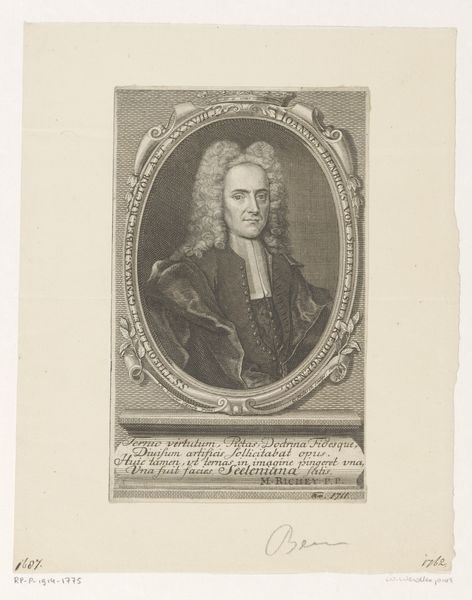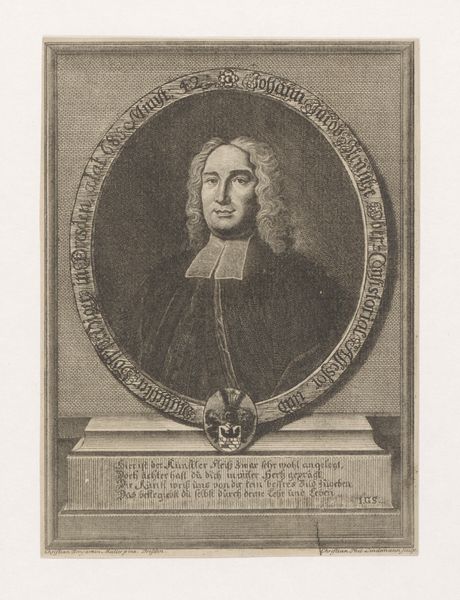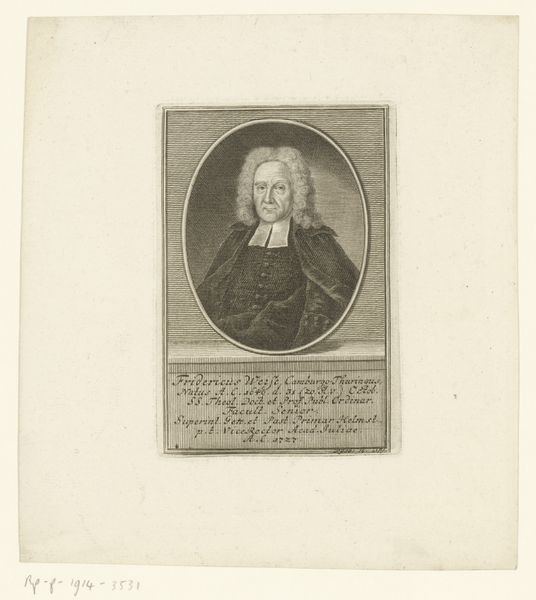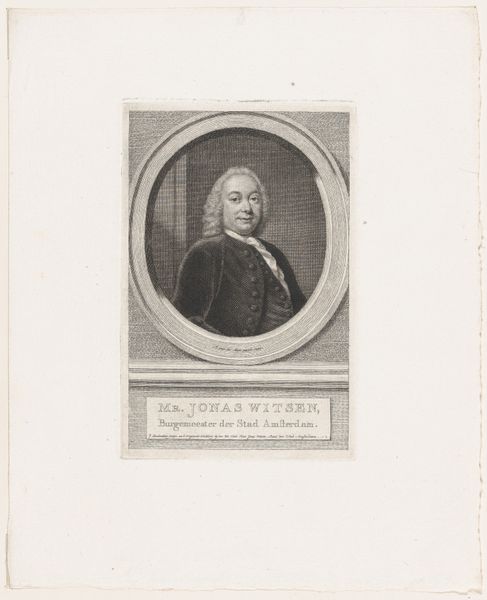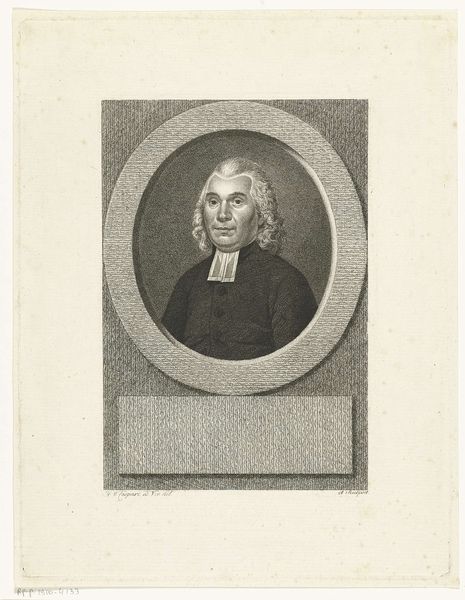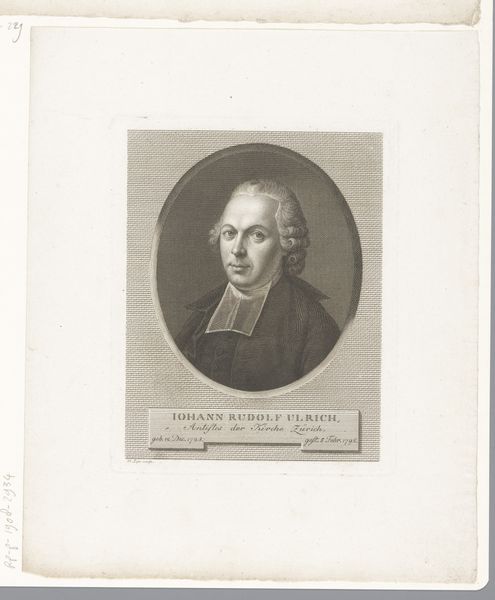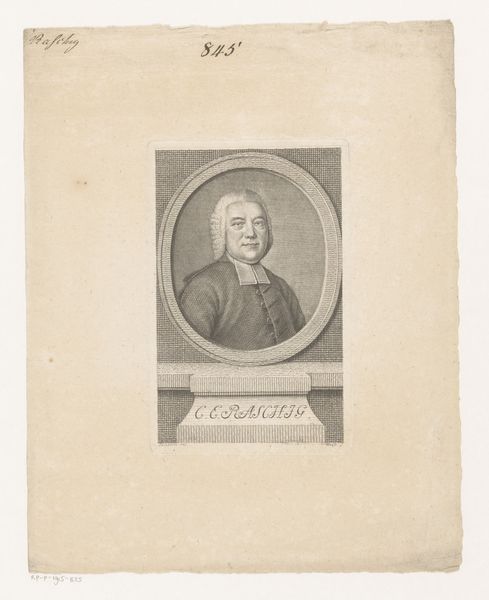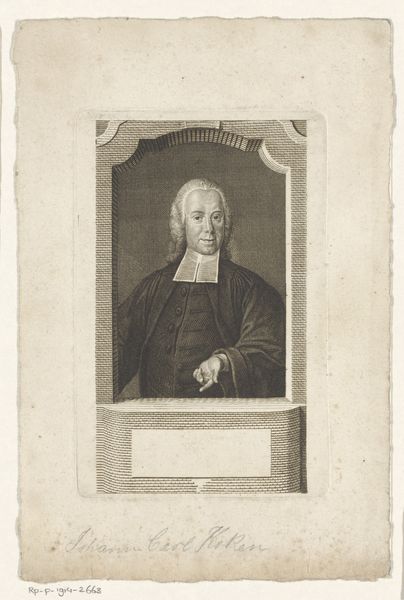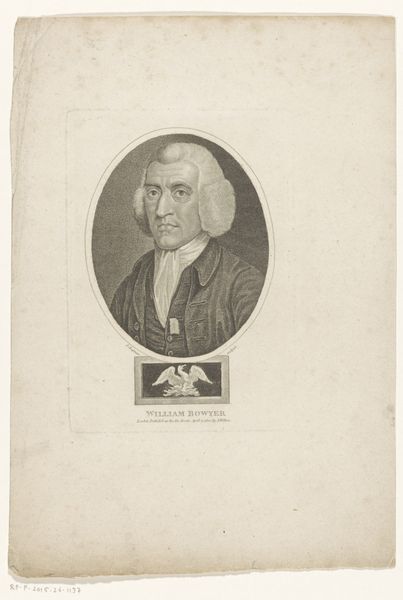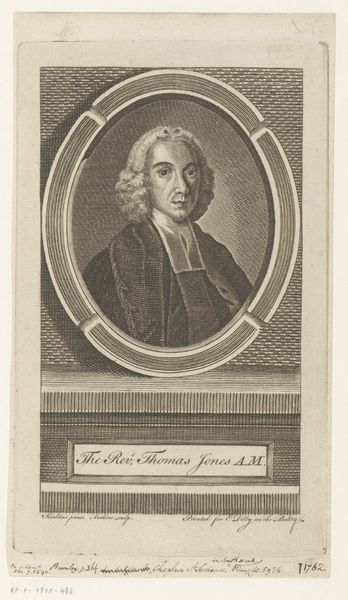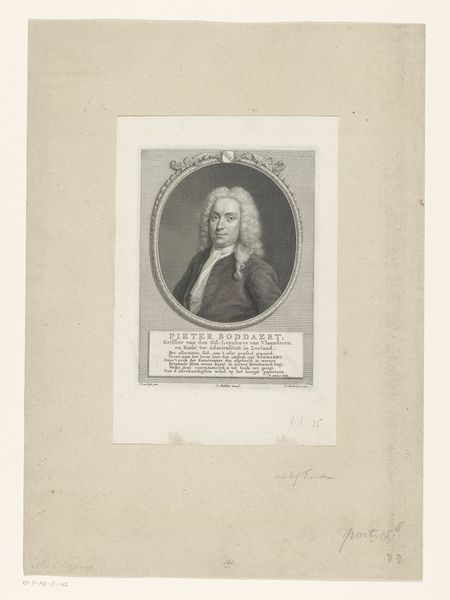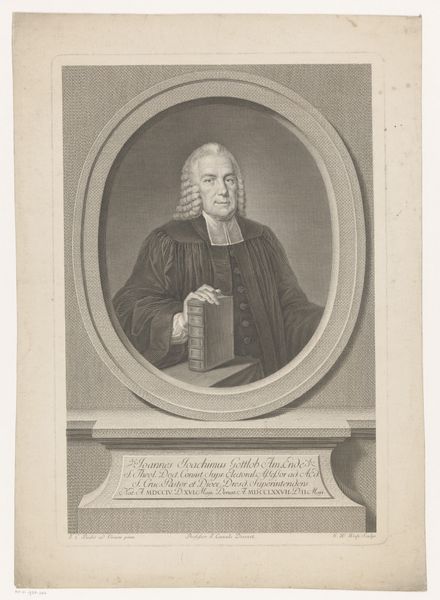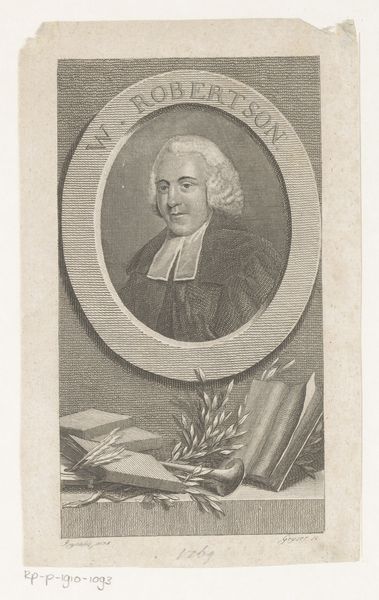
print, engraving
#
portrait
#
neoclacissism
# print
#
old engraving style
#
15_18th-century
#
history-painting
#
engraving
Dimensions: height 182 mm, width 121 mm
Copyright: Rijks Museum: Open Domain
Johan Frederik Clemens created this portrait of Paul Egede with engraving techniques. This process involves meticulously incising lines onto a metal plate, applying ink, and transferring the image to paper. The appearance of this print is directly tied to the processes of its making. The fine lines, precisely cut, create shading and detail that define Egede's features. This was a skilled tradition, requiring years of practice to master control over the burin, the tool used for engraving. It sits alongside other traditions of creative practices, and aesthetics of craft and fine arts. Engraving, though capable of great subtlety, was also a mode of reproduction, facilitating the wider distribution of images in a pre-photographic era. This speaks to broader social issues of labor and consumption, as prints like this would have been relatively affordable, allowing a wider audience to access portraiture and visual information. Ultimately, understanding the material and the making of this print allows us to appreciate its role in disseminating images and knowledge within its historical context.
Comments
No comments
Be the first to comment and join the conversation on the ultimate creative platform.
